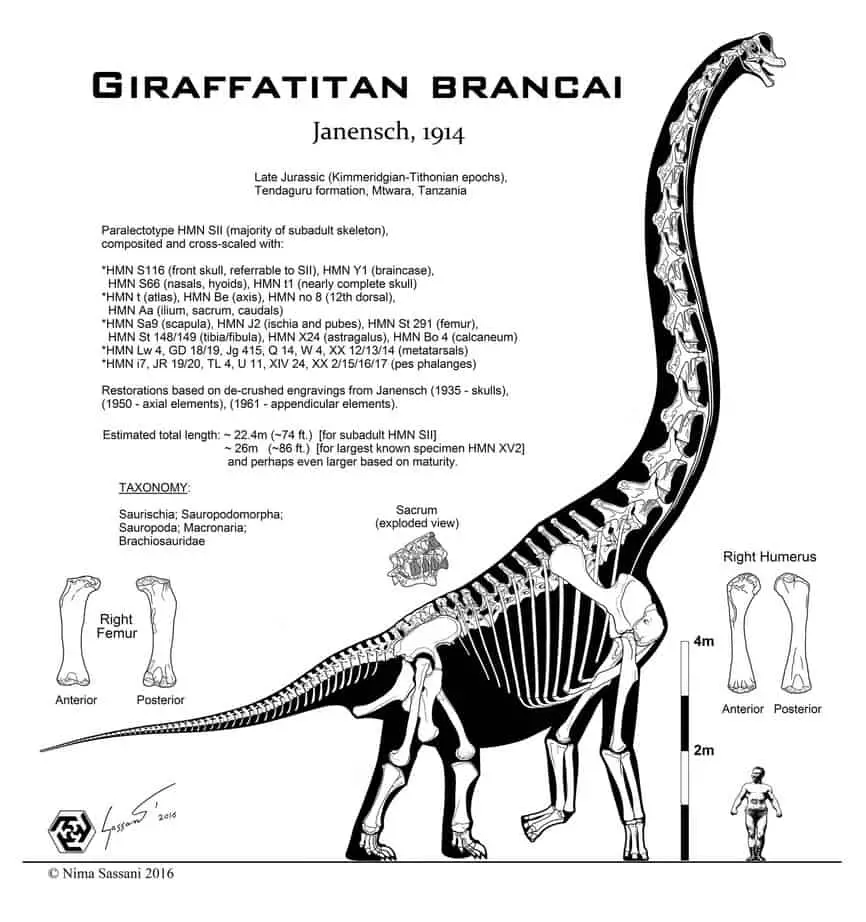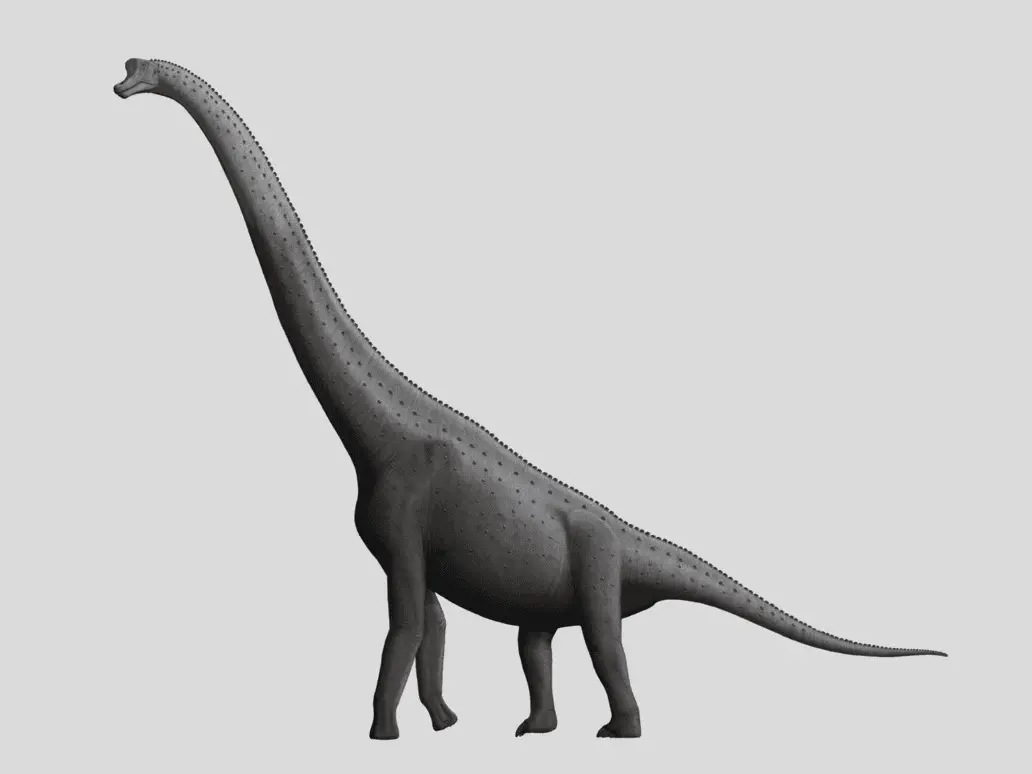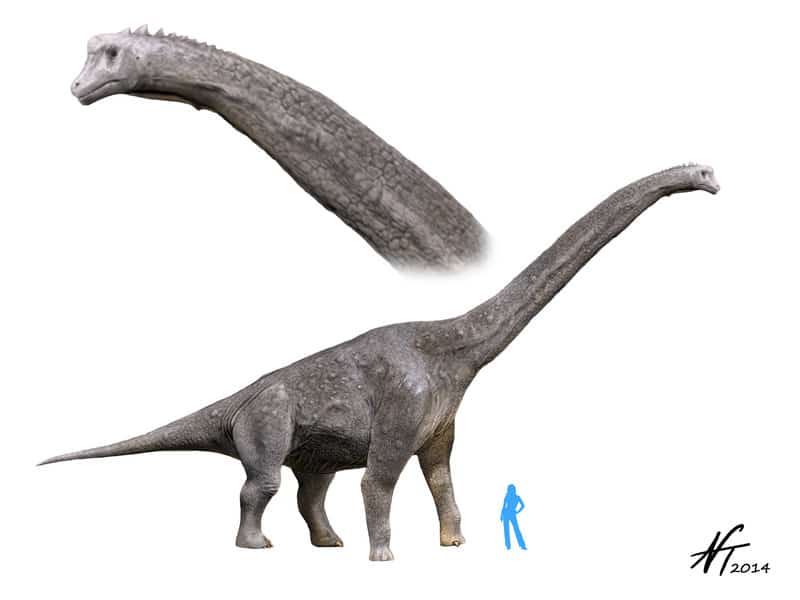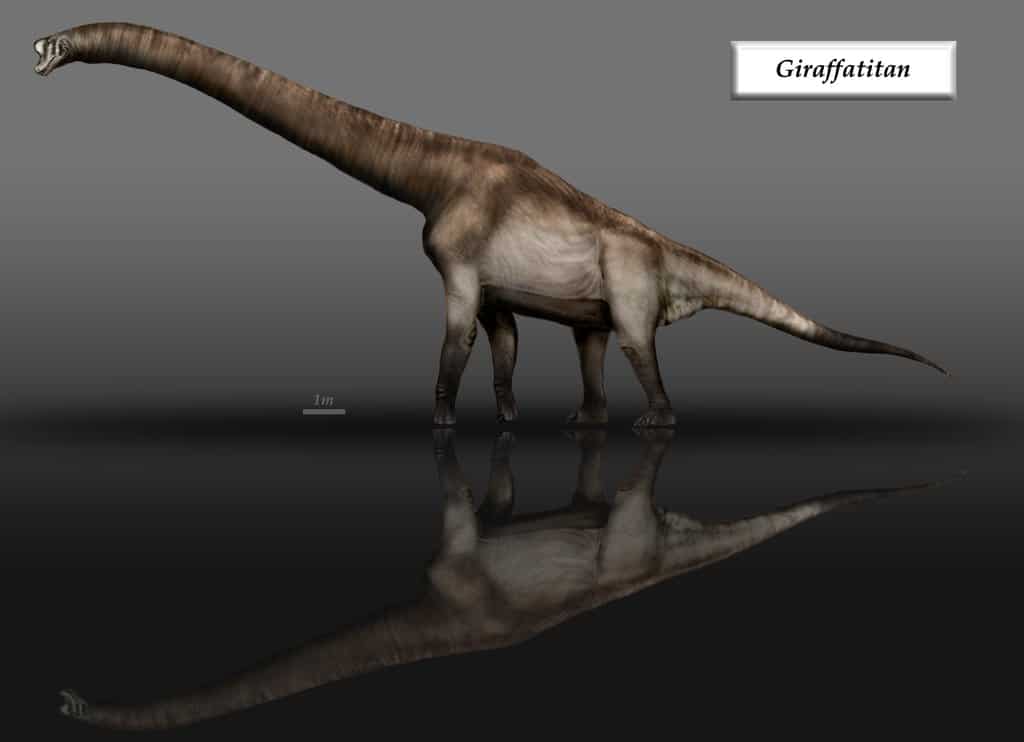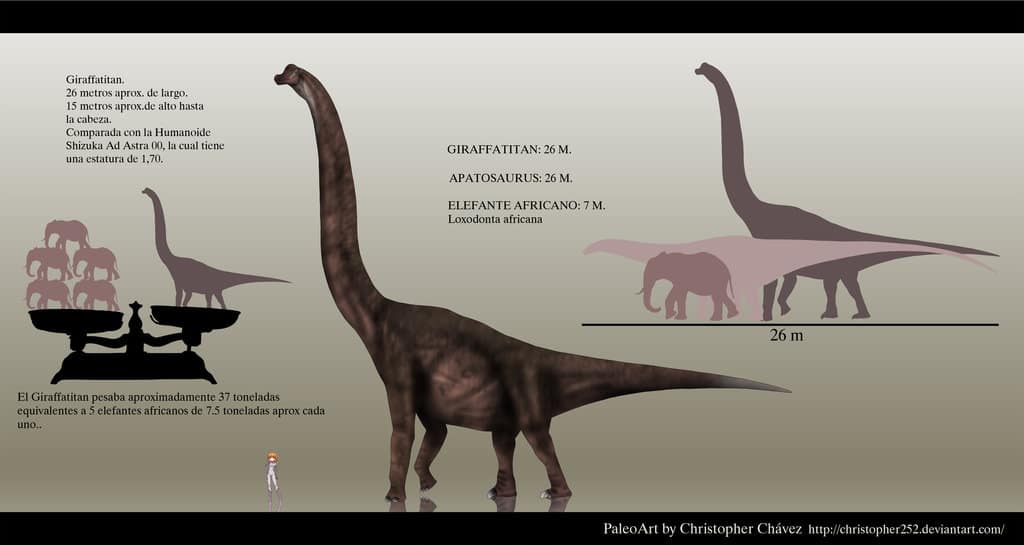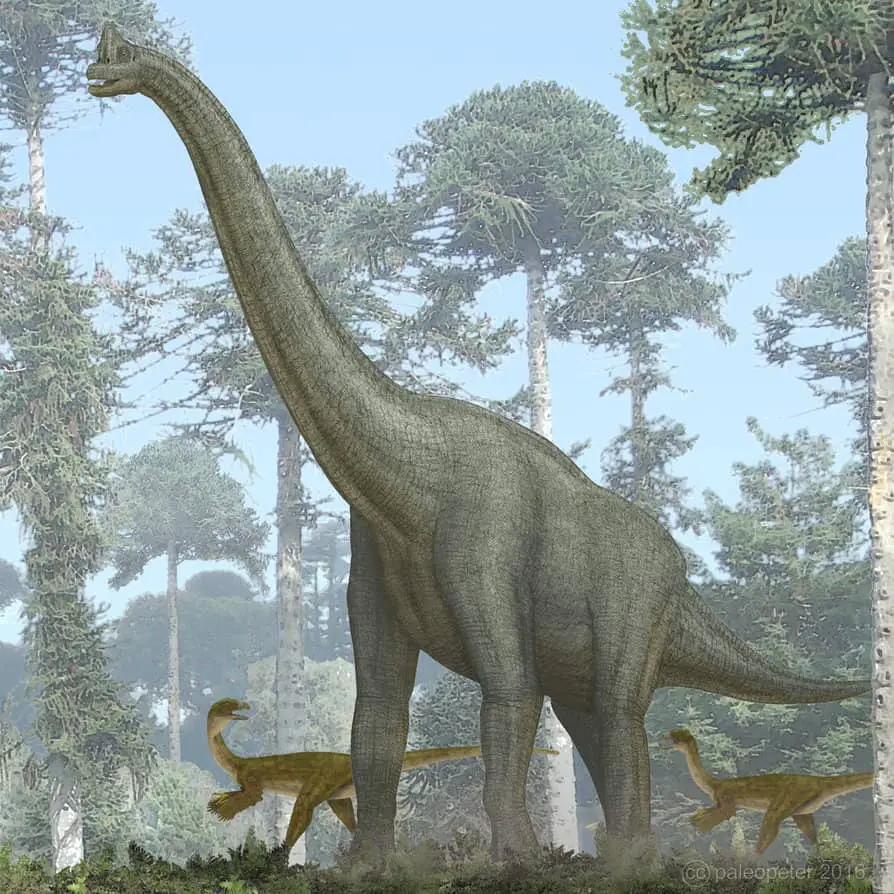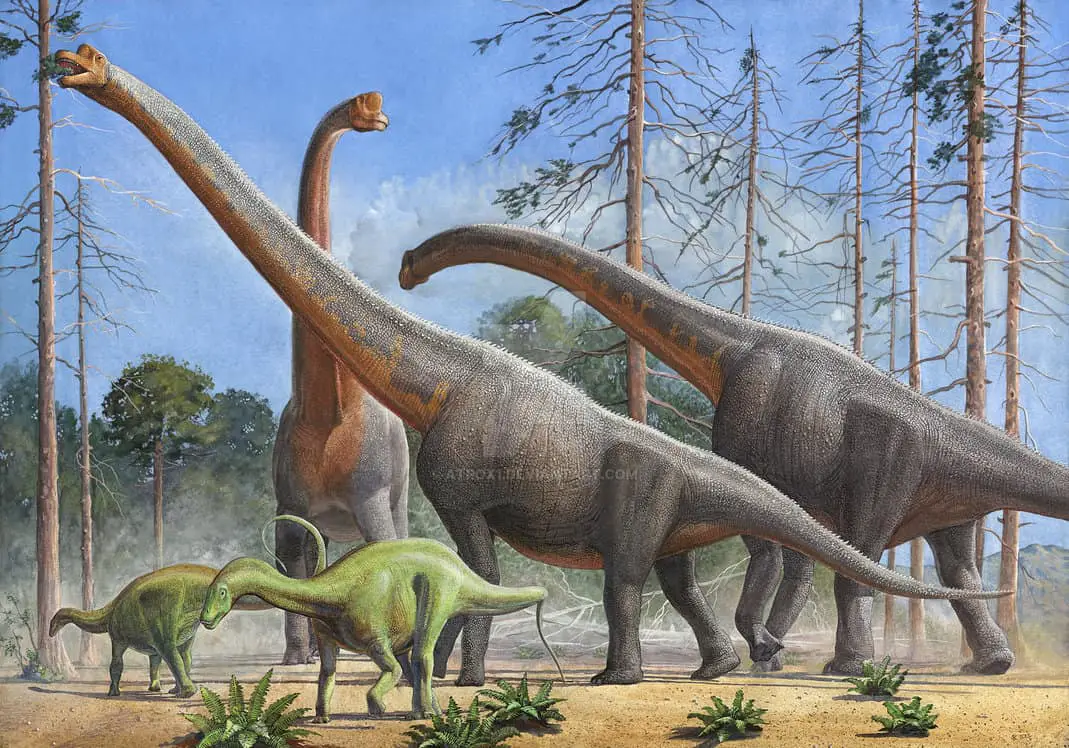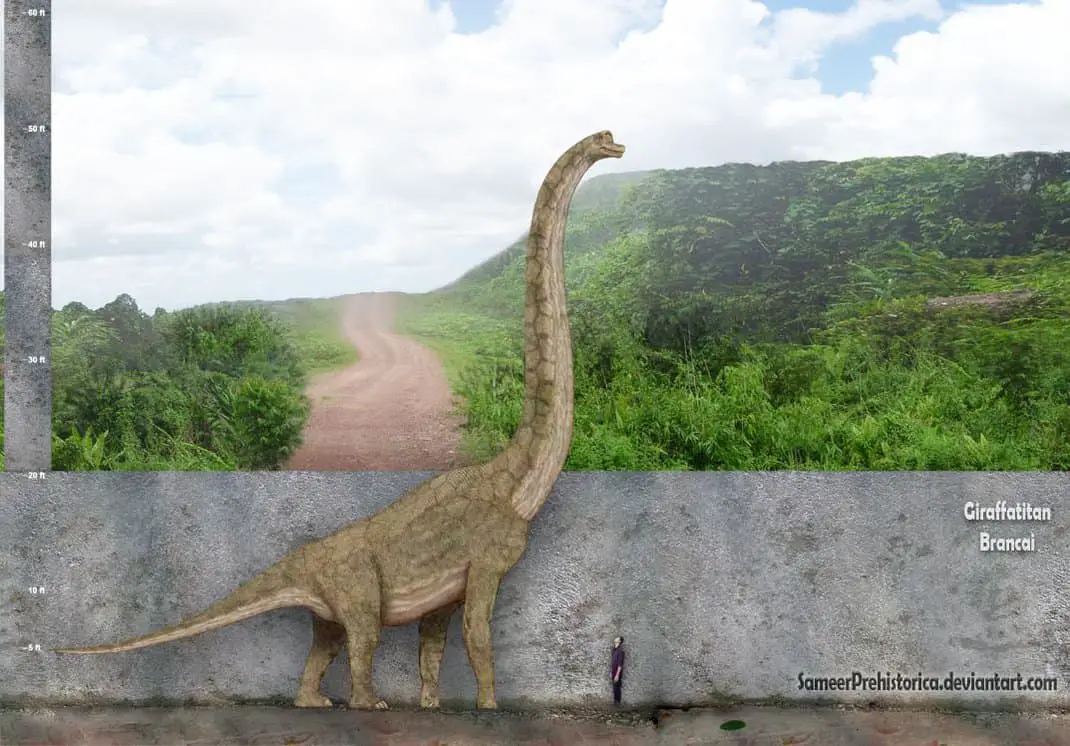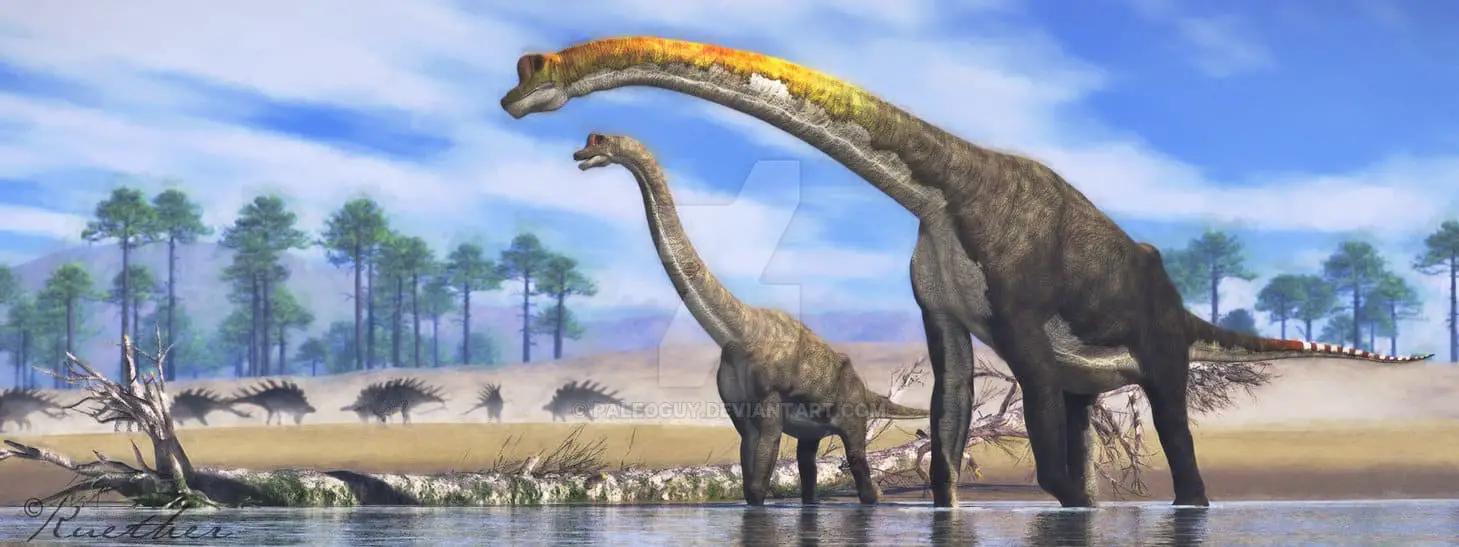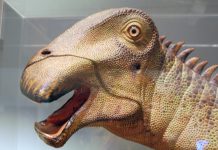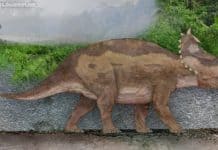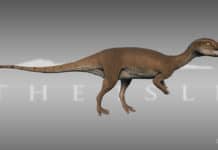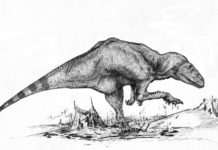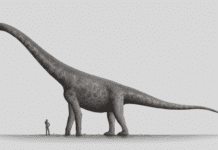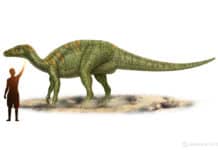Quick Giraffatitan Facts
- Weighs as much as 10 Asian elephants
- About 4 times as long as a giraffe
- Lived in what is now Africa
- Lived during the Late-Jurassic period
- Was an herbivore
– Giraffatitan Merchandise –
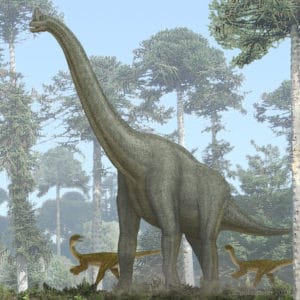
About Giraffatitan
Giraffatitan is a species of dinosaur that was originally discovered in Tanzania (a part of what was known as German East Africa at the time) between 1909 and 1912 by German paleontologist Werner Janensch. In 1914, he named it a member of the Brachiosaurus brancai family and was given the name Giraffatitan – which means “giant giraffe.” It lived approximately 150 million years ago in parts of Africa during the Late Jurassic Period.
Although about 5 Giraffatitan skeletons have been found, none of them are complete. From these five skeletons, paleontologists have been able to assemble one of the largest mounted dinosaur skeletons in the world. A skeleton which is hanging in the Museum für Naturkunde in Berlin.
Some interesting facts about Giraffatitan include the fact that it was unique enough from the Brachiosaurus brancai family to be placed in its own genus and that this was done in the late 1980s. Its new genus was simply the Giraffatitan genus.
As can be seen from Giraffatitan pictures, these dinosaurs were very much giraffe-like. They had long necks and were about 70 feet long – from head to tail. They weighed approximately 30 short tons and walked on all four legs. In recreations, scientists have colored this dinosaur in shades of yellow – which makes its resemblance to giraffes all that more striking.
These animals were most certainly herbivores and probably browsed the top of trees like giraffes do nowadays. However, they probably not only loved eating ferns and conifers, but also probably enjoyed eating ginkgo, club mosses, horsetails and cycads.
Interesting Facts
Today, there is some debate over whether Giraffatitan was a warm-blooded animal or a cold-blooded animal. If this dinosaur was warm-blooded, then it would have needed to have consumed a whole lot of food to meet its energy demands. Some paleontologists concluded that it would have needed to eat more than 400 pounds of food a day, if it were warm-blooded. If it were cold blooded, then it would only have required about 200 pounds of food a day. Currently, this debate is unresolved. No one truly knows whether these dinosaurs were warm or cold-blooded.
It is currently unknown whether these dinosaurs traveled in herds or were solitary creatures. Traveling in herds would have been the safe route for these dinosaurs because few predators would want to tangle with a whole herd of these massive creatures. Predators would probably only have preyed on the old, the sick and the young.
